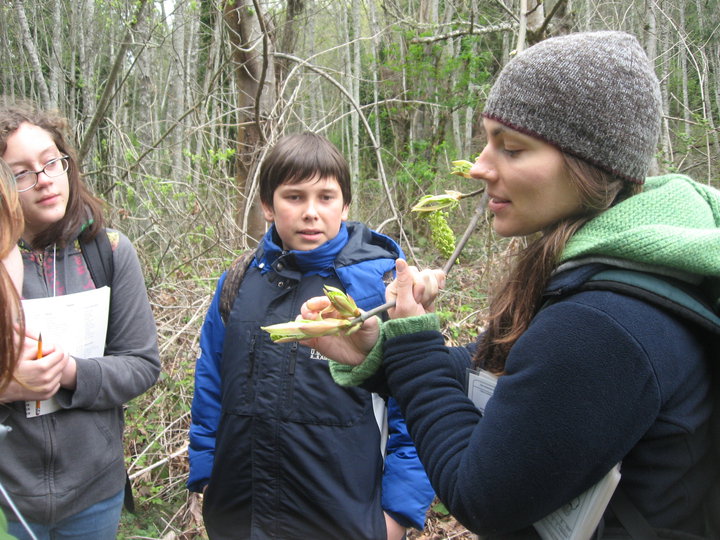
Some students may pursue careers at outdoor education centers while others may want to teach environmental science or lead youth in conservation programs.
Chelsea Trout’s first day at PEI coincided with the inaugural meeting of the writing team for a new statewide Education through Outdoor Learning (EOL) Career and Technical Education (CTE) framework. The group’s purpose: to design a pathway for students interested in becoming environmental and outdoor educators. The collaboration included representatives from three school districts, one university, one tribe, four state agencies, and one Educational Service District (ESD). As a brand-new staff member, it was like skipping the shallows and diving straight into the deep end of PEI’s pool.
Now, the framework is complete and Trout has become adept at navigating complex waters as PEI’s Green Jobs Coordinator. “It has been awe-inspiring how many people across our state want this work completed,” she says. “There’s a vast desire to create opportunities for students to learn outdoors. Building this course with the momentum of the Outdoor Schools for All initiative has been perfect timing.” This legislation was funded in 2022-23 to ensure that every 5th or 6th grade student in Washington has access to outdoor school. The EOL pathway provides opportunities for high school students to build skills that can lead to environmental, outdoor, and preK-12 education careers. The course has several threads for both formal and nonformal educators.
“It has been awe-inspiring how many people across our state want this work completed,” she says. “There’s a vast desire to create opportunities for students to learn outdoors. Building this course with the momentum of the Outdoor Schools for All initiative has been perfect timing.”
— Chelsea Trout, PEI’s Green Jobs Coordinator
“An example might be someone who wants to become an environmental science teacher,” says PEI’s Associate Director of Green Jobs Heather Spalding. “Someone else might want a job at an outdoor education school or to work with youth in a conservation program. The goal is to expose high school students to the different career opportunities in those fields.”
The writing team included CTE teachers representing Highline, Tukwila, and Methow Valley School Districts. Additional writing support was provided by representatives from Outdoor Schools Washington, Association of Washington School Principals, the Colville Confederated Tribes, Washington Teacher Academies, ESD 112, OSPI including OSPI’s Office of Native Education, and Central Washington University.
One factor the writers considered was how the pathway could develop environmental educators who reflect the students they serve. “We want to make this career pathways accessible for students from districts with high levels of diversity in their student population,” says Spalding. “We’ve been building partnerships with teaching academies in some of those districts.” As a step toward that goal, one teacher already expressed interest in sharing the frameworks with Spanish-speaking students.
For Trout, it was important to maintain environmental education’s focus on reflection which can get lost amid academic standards. “Teachers build small communities in their classrooms each year,” she says. “I didn’t want these frameworks to lose the aspect of teachers allowing themselves and their students to reflect and be vulnerable.”
Two writing team members, CTE teachers Joe Camacho of Tukwila School District and Melissa Chance of Highline School District, have already implemented the frameworks with students. Fellow team member Grant Storey has used aspects of the framework to build outdoor recreation courses in the Methow School District.
Trout recently presented the frameworks at the Outdoor Schools Washington Conference and shared information about working with high school student leaders. She and Spalding will also meet with Camacho, Chance, and Storey to create a teaching materials database for each course. The next step will be submitting them to OSPI for course equivalency credit.
However, any teacher interested in using them now can do so. “We’re looking for teachers to pilot these courses,” says Spalding. “We would be happy to work with any interested district to get something in place.” This Career Connect Washington Program Builder Project receives support and funding from a US Department of Labor WIOA Title 1-B grants. Read more about USDOL grant funding at esd.wa.gov/usdol.
